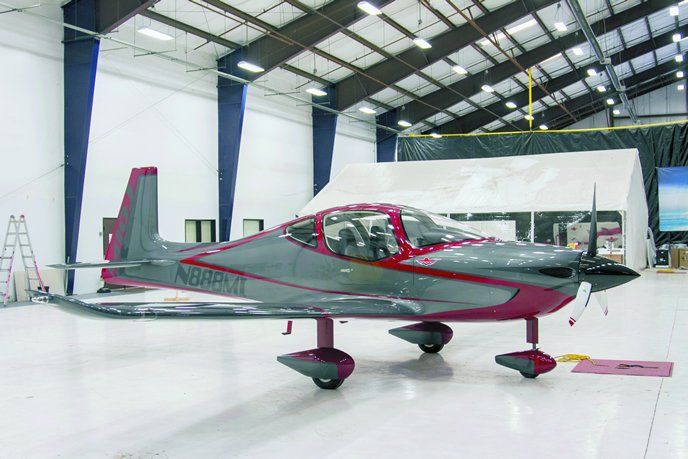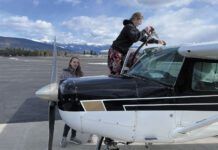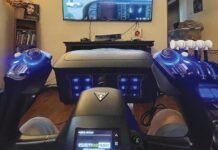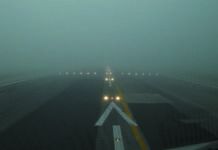Frustrated buyers who complain about the stratospheric prices of new airplanes sometimes argue—rightly or wrongly—that manufacturers could offer cheaper products if they would just build simpler airplanes using more automation in construction. With its surprise announcement of two new aircraft at last fall’s Zhuhai Airshow in China, Mooney may be about to test the theory. At the least, Mooney is poised to muscle into a market it heretofore barely dabbled in: trainers.
Newly acquired by Chinese interests with capital to spend, Mooney has embarked upon an aggressive plan to develop a basic trainer and a step-up personal airplane, both diesel powered and both sharing the same basic airframe. It’s also investing heavily in the Kerrville, Texas, plant where it has made the venerable M20 series for years; the line recently restarted and began deliveries.
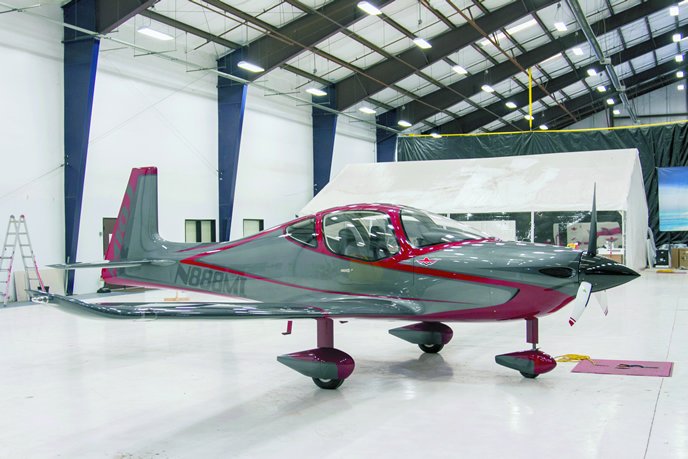
While Mooney says it sees potential in China and Asia for trainers, expect to see the company pitch these new products to the North American market, too, where CEO Jerry Chen thinks there’s demand, despite dismal sales numbers recently announced by the General Aviation Manufacturers Association. Although it has demurred on announcing prices for the new airplanes, with new Skyhawks and Diamond DA40s topping $400,000, Mooney may have some competitive headroom if its new design and construction can find the sweet spot between volume and manufacturing cost.
But first, the company has to complete the design and certify it. When we visited Mooney’s new Chino, California, facility in April, the company was we’ll along with this process. Although no flyable airplane exists yet, the first test article was planned for late summer 2015. We were shown developmental drawings and modeling that has been extensively exposed to computer fluid dynamics trials with wind tunnel tests planned.
New Company
Among contemporary aircraft manufacturers, Mooney holds a record of sorts for having been in and out of bankruptcy so many times even stalwart owners lose count. In the company’s nearly 90 years of building airplanes, it has been owned by an electronics company, an FBO chain, a steel company and was briefly public. In October 2013, it was bought by a U.S.-based company called Soaring America, whose principal investors are of China’s Zhengzhou-based Meijing Group, a real estate and import/export company.
At Sun ‘n Fun 2014, the company announced a $50 million recapitalization of Mooney, to include modernization at Kerrville and, although it wasn’t announced at the time, at least two new aircraft were envisioned. And Mooney wasted no time in unveiling a mock-up at China’s Zhuhai general aviation show in November 2014. The mock-up was the M10T, the base model trainer Mooney intends to use as the platform for a follow-on product, the M10J, a retractable step-up that’s a clear bow to the M20J 201, one of the company’s most well-regarded designs that remains popular on the used market.
What used to pass for conventional wisdom had it that any manufacturer needed a range of products, from trainers to step-ups, to cruisers to twins. As a niche manufacturer, Mooney never gave more than lip service to the idea, specializing as it did in four-place, high-performance aircraft. It feinted briefly toward two-place trainers when it bought the Alon Ercoupe, revised the airplane with the company’s signature reversed vertical fin and sold about 116 before selling the design to Univair in 1973. Ironically, that airplane was the first M10 and was called the Cadet. Before that, Mooney went downmarket with the M20D Master, by fitting fixed gear in place of the folding wheels on an M20C. It wasn’t really a trainer, but was meant to be an economy model. Mooney sold under 100 before killing it.
The new M10T revisits this territory, but unlike the Cadet, it’s an original design with a specific world market in mind and Mooney intends it to become a primary product.
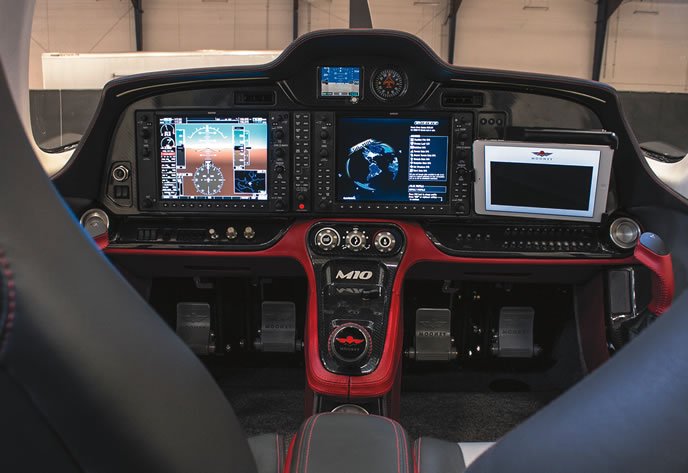


Driven by style
The M10T/J are distinct departures from Mooney’s previous offerings, but perhaps not entirely unexpected, given where the market opportunities may lie. Cirrus has the high-performance personal airplane market locked down with the SR22, but while the SR20 finds spots on the training flight line, few consider it a trainer in the way the Cessna Skyhawk is. But the Skyhawk has become so expensive—$400,000-plus—that it may have priced itself out of anything resembling a broad market. Thus, Mooney finds an opening for a trainer-cum-cruiser based on the same airframe. Rather than metal, the M10s are primarily composite combined with some carbon fiber for weight control. Despite being smaller overall than the Ovation/Acclaim series and only slightly smaller than the M20J, the basic M10 cabin is considerably more commodious, by design. It’s about four inches wider than the widest M20 cabin, with more headroom, making it closer to a Cirrus in overall feel.
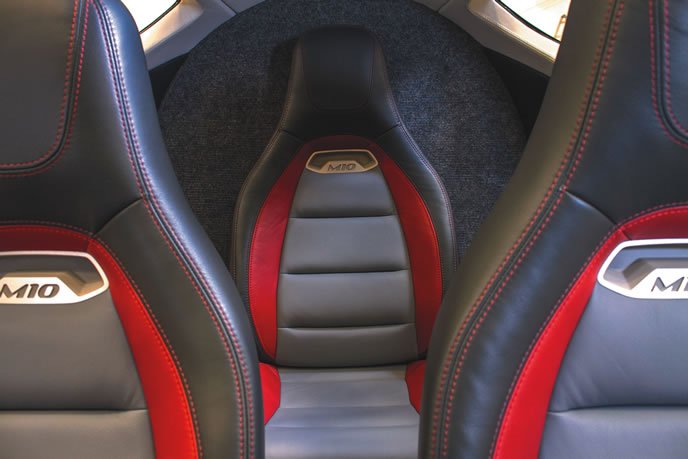

And that feel is intended to be—and is—automotive. CEO Jerry Chen and Mooney’s VP for development, Tony Parker, told us the company believes the next generation of aircraft will have to appeal to potential buyers whose frame of reference is cars, not aircraft. Cirrus has already pioneered this, but not to the degree that Mooney is attempting, in our view.
“If we talk about a mature western market in the states, pilots already know what an aircraft interior looks like. But in a new market, China, it’s brand new. They don’t have the background to understand what airplane operation is or the way it looks,” says Chen. So the frame of reference needs to be automotive. Moreover, Chen thinks even the North American market is ready for fresh cosmetics. “People have been waiting long enough to see something change. I think we may have a chance if we go in this direction,” he adds. But the change we see is strongly stylistic and modestly technical. We would call it modern but modest. Mooney hired a design house with experience in automotive, Dzyne Technologies, to work up the basic concepts around three briefs: safety, speed and style. Dzyne’s Brenden Kennelly showed us iterations of drawings that yielded the M10’s final shape.


“Performance was the main driver and everything kind of feeds that,” Kennelly says. “Initially, our windshield was even more raked, which was great for aero and when we did CFD [computational fluid dynamics], we had laminar flow past the rear seat. But that didn’t serve visibility or headroom for the occupants,” he explains. The cabin was pulled and stretched to yield an interior that’s spacious—surprisingly so—in both front and rear. Mooney isn’t talking about a four-place airplane, so the initial M10Ts will have a single seat in the back, which is what flight schools said they wanted for an observer. In flight training, four-place airplanes are seldom flown with full seats. Three seats helps minimize weight and gives the rear passenger room—a lot of room.
The step-up M10J will offer the third seat as an option, meaning that the boldest part of Mooney’s new airplane may be the fact that it’s venturing into the iffy territory of high-performance, two-place airplanes where history offers few market success stories.
Like a Benz
At Chino, we were shown Mooney’s wooden ergonomic mock-up which guided the development of the full-size conceptual model shown at Sun ‘n Fun. Entering the cabin is to be overwhelmed by the fragrance of expensive leather and a panel reduced to the utter basics. Although it’s intending simplicity, the M10T has a Garmin G1000 because focus sessions with flight schools indicated that’s what buyers wanted. “We could have gone with the G500 or 600,” says Tony Parker, “but it didn’t really save much money.”



As Dzyne’s Kennelly indicated, the interior tends to dominate the impression of the airplane. The sill height makes for an easier ingress than in the M20s and there are two doors, an absolute must in competing with Cessna, Cirrus and Diamond. Detailing is sparse but richly rendered in red and black leather with expressed stitching. Sidestick controllers reside just ahead of the forward edge of the doors and generous armrests ease pressure on the wrists. The panel is absent all but the minimal number of controls, including climate-control knobs, breakers to the far right and a glass back up gyro in a glareshield eyebrow reminiscent of earlier Mooneys. A center console houses the single-level throttle—upholstered in leather—flaps and, for the retractable J-model, a gear switch. Visibility over the glareshield is expansive compared to the M20 series, clearly the beneficiary of Kennelly’s stretching exercises.
Construction wise, the M10s are similar to the Cirrus and Diamond line, albeit a combination that will probably include more carbon fiber and a little less glass to keep the weight down.
Manufacturing details are a work in progress, but the airplane will likely be built just as others of its ilk are: Two bonded fuselage halves, clamshell wing construction and the usual torque tubes for control circuitry. In a departure anyone who’s ever crow hopped a Mooney will appreciate, the landing gear will be conventional oleos (including the retractable version) rather than Mooney’s iconic rubber donuts.
For the time being, the engine choices are only diesel: Continental’s CD-135 for the M10T and the CD-155 for the higher-performance M10J. Cruise speeds for the M10T are claimed as 140 knots (160 knots maximum) and 160 knots for the M10J, making it a near equivalent of the 201, but on at least a third less fuel. The M10T promises to be faster than a Skyhawk—gasoline or diesel—and competitive with Diamond’s gasoline DA40.
Mooney COO Tom Bowen said to make these numbers, Mooney will have to mind the drag. It has settled on an unsually high-aspect-ratio wing but details on low-speed devices have yet to be worked out. “It easy to get a wing to go fast or slow,” Bowen said, “but a challenge to get it to do both.”
Cooling drag will be a challenge, too, since diesels suck a lot of air and have both water radiators and oil coolers. In that regard, Mooney may have an advantage because the design is a clean sheet whose snout can be optimized for diesel, albeit within the constraints of the M10’s stylistic requirements. In our view, this has hobbled diesel conversions whose airframes weren’t intended for diesel’s peculiar requirements.



Build Economics
Two things are pointedly absent from Mooney’s spec sheet: weight and prices. Both are important and probably more closely tied than is obvious, since weight reduction can add cost, both in the quest for lighter materials and engineering time to find the ounces and pounds. With not much surplus power from the diesels, Mooney can’t afford a fat airplane if it wants to be competitive. Speaking of that, when asked about price, Mooney said it will be “competitive.” But with what? Just competitive, the company says. If that’s competitive with Flight Design’s C4, the price would be about $250,000; if with the latest models of the Cessna 172, $400,000 would do it. We suspect at least some of the reticence to name a price comes from Tony Parker, who headed engineering at Eclipse and we’ll remembers how that company struggled to meet price points that, in the end, proved unrealistic.
“The one thing I learned is to not be too hasty in announcing the prices before you figure out what it really costs to build it,” Parker says. Accordingly, Mooney is using every tool available to understand we’ll ahead of committing to production as much as it can about assembly hours, processes and costs. One of those tools is extensive use of CAD-CAM. Tom Bowen said of all the aircraft projects he’s overseen, the M10 is by far the most CAD-CAM intensive and that may extend to any light aircraft, ever. No surprise that many of the engineers we met at Chino came from Boeing or Grumman.
During my tour of Chino, we were shown dozens of drawings in a CAD-CAM suite called Solidworks. “Solidworks has a package called Composer that can incorporate a manufacturing work instruction. It takes the CAD design and by animation shows the mechanic how the airplane goes together and in what order,” Parker says. By building the airplane virtually down to the last fastener, Parker believes Mooney will have a better idea of the build-hours budget. And all of that will be integrated into the supply chain, just as it is in high-volume auto plants.
Build time is certain to be a fraction of the hours required for the M20s. Bowen says the traditional metal construction of the M20 series totals 3500 parts; the M10, at 350 parts, is an order of magnitude less. But Bowen, who went from Mooney to Lancair and now back to Mooney and who knows a thing or two about metal and glass, says composite isn’t the miracle solution some people assume. There will be a place for metal.
“The good thing about composites is that they’re very good for complex shapes and assemblies. The bad news is if you scrap one, you’re scrapping a lot of materials,” Bowen says, speaking from experience at Lancair. “The most important thing I can bring to the company is the perspective that there are things that should be built out of composite and there are things that are better in metal. And you’ve got to understand the difference. But metal is not cheaper,” Bowen adds.
Mooney hasn’t decided where the M10s will be built yet, but Chen says a factory will eventually open in China. The new airplanes could be built in Kerrville or in Chino or a combination. Parker expects production will use as many off-the-shelf components as practical and it’s likely composite work will be farmed out, at least initially. For now, job one is building the proof of concept and flying it by late summer 2015. After that, Mooney will have its plate full finishing the cert program, which it promises by late 2017, with deliveries to follow after that.

